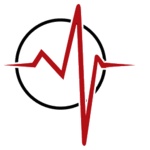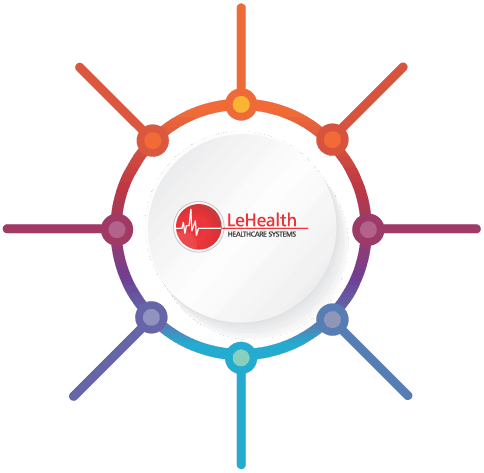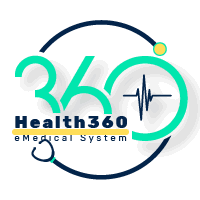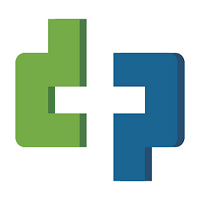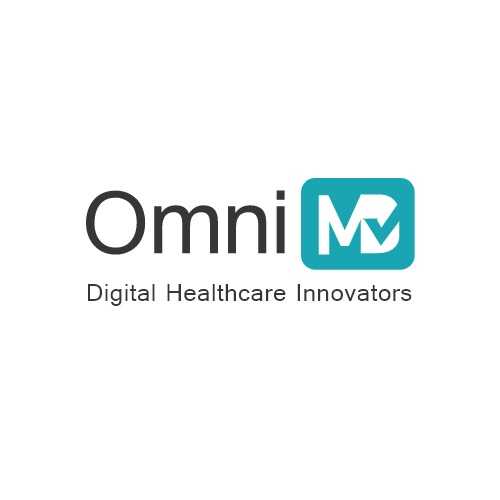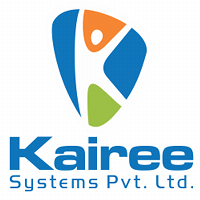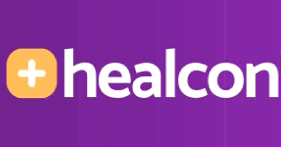What Is Doctor Software?
A sophisticated tool created especially for medical practitioners, doctor software helps them improve patient care, organize their practices, and make administrative work easier. It is a complete solution that includes a number of features to assist physicians in effectively managing and planning their daily tasks. Keeping track of patient information is one of the main purposes of medical software.
It enables physicians to safely store and retrieve patient data, such as lab results, medications, treatment plans, and medical histories. By doing this, manual record-keeping is no longer necessary, which lowers the possibility of mistakes and facilitates information retrieval when needed. Doctor software provides scheduling features in addition to patient management.
This helps doctors to avoid double booking, efficiently manage their time, and keep track of their appointments. Patients can even schedule appointments online with some sophisticated doctor software, which eases the workload for front desk employees and improves user convenience. The capacity of doctor software to create electronic prescriptions is another crucial component.
This feature lowers the possibility of mistakes and improves patient safety by enabling physicians to prescribe drugs to their patients in a timely and correct manner. Additionally, this removes the need for handwritten prescriptions, which are prone to errors and can be challenging to understand. Additionally, billing and invoicing features are frequently included in medical software, which helps physicians better manage their money.
In addition to tracking payments and unpaid balances, it can create patient bills and even interface with insurance companies. Additionally, the majority of contemporary medical software include telemedicine features that let physicians consult with patients virtually. In the modern world, where remote consultations have grown in significance and convenience for both patients and physicians, this is extremely advantageous.
What Are The Recent Trends In Doctor Software?
The use of technology in the healthcare sector has grown significantly in recent years, and this is also true of doctor software. For healthcare professionals, this software has become a vital tool that helps them increase efficiency, improve patient outcomes, and streamline their procedures. Doctor software keeps evolving to satisfy the shifting demands of healthcare workers due to the ongoing improvements in technology.
Combining machine learning and artificial intelligence (AI) is one of the newest developments in medical software. Thanks to this technology, the software can learn from patient data and produce more precise treatment plans and diagnoses. Additionally, it can help anticipate possible health problems and provide patients with individualized treatment programs.
AI-powered medical software can help lower diagnosis errors and improve patient satisfaction. The creation of cloud-based solutions is another trend. Improved data security, lower maintenance costs, and remote access are just a few advantages of cloud-based medical software. This removes the need for paper records and physical storage by enabling doctors to access patient information from any location. Additionally, it makes it simpler for patients and healthcare professionals to work together, which improves communication and care coordination.
Additionally, customer relationship management, or CRM, is growing in popularity in medical software. Healthcare professionals can automate communication, track appointments, and manage patient contacts with CRM. This enhances the general patient experience and contributes to the development of a devoted patient base. The development of doctor software has also been impacted by the growth of telemedicine.
Telemedicine makes healthcare more easy and accessible for patients by enabling virtual appointments and distant consultations. Among other things, telehealth-capable doctor software enables electronic prescriptions, remote patient monitoring, and secure video conferencing. Finally, interoperability has emerged as a critical component of medical software.
Doctor software must be able to communicate patient data easily and be compatible with other systems due to the growing use of electronic health records (EHRs). This promotes better healthcare decisions by enabling a more thorough and accurate grasp of a patient's medical history.
Benefits Of Using Doctor Software
In the current digital era, doctor software is a vital tool for medical practitioners. It has numerous advantages that improve accuracy, efficiency, and convenience in a number of areas of medical practice. Here are some of the main advantages of purchasing medical software, if you're thinking about doing so:
1. Simplified Patient Management: The capacity of doctor software to simplify patient management is one of its main advantages. Doctors may effectively handle patient data and appointments with tools like electronic health records (EHR), appointment scheduling, and automated reminders, which cut down on administrative work and save time.
2. Better Communication And Collaboration: A platform for improved communication and collaboration between patients and healthcare providers is offered by doctor software. Better patient involvement and satisfaction can arise from the capacity to safely share test findings, treatment plans, and other crucial information with patients.
3. Increased Accuracy And Efficiency: Doctor software helps to limit the possibility of misinterpreting handwritten notes and remove human mistake by digitizing patient records and automating numerous operations. This raises the practice's general efficiency in addition to improving the accuracy of medical records.
4. Access To Extensive Medical Data: A large database of medical data, such as medication interactions, allergies, and prior medical history, is usually included in doctor software. This enables physicians to quickly and easily access thorough patient data, facilitating better patient care and more informed decision-making.
5. Compliance With Regulatory Requirements: Because the healthcare sector is always changing, it can be difficult for physicians to stay current on compliance and regulatory requirements. However, features like compliance tools and automatic upgrades are frequently included in doctor software, guaranteeing that practices constantly adhere to the most recent rules.
6. Cost Savings: Although purchasing medical software may seem like a big investment at first, it can end up saving practices a lot of money over time. Doctor software can save medical offices a lot of money by decreasing administrative work, lowering errors, and increasing productivity.
Important Factors To Consider While Purchasing Doctor Software?
To make the greatest choice for your practice, there are a number of crucial variables to take into account when buying doctor software. Every element, from price to functionality, is essential to the effectiveness and success of your software.
1. Specialization: The first and most crucial factor to take into account is whether the program is made especially for your area of expertise or if it is meant for general usage. Every specialty has different needs, and workflow and efficiency can be significantly increased by utilizing specialist software.
2. Features: The software's features should be taken into account next. Features like electronic health records, scheduling, invoicing, and patient portals are essential for a quality medical software program. Prioritize the features that are essential to your practice and select software that satisfies those requirements.
3. User-Friendly Interface: The ease of use of any product is a critical component of its successful deployment. Choose software with an interface that is simple to use and intuitive. This will lessen the learning curve for new hires and save time for your personnel.
4. Compatibility: Verify that the program is compatible with your current systems and equipment before making a purchase. This covers operating systems, hardware, and other software programs.
5. Provider Help: If you have any questions or reservations about the program, it's critical to pick a provider that provides prompt, dependable help. Examine the vendor's track record, client testimonials, and the kind of help they provide—phone, email, or in-person.
6. Cost: Although the software's price is a significant consideration, it shouldn't be the only one. Think on the whole benefits the program will offer your clinic, including reduced expenses and time, increased productivity, and better patient care.
7. Security And Compliance: Selecting software that complies with healthcare laws like HIPAA is essential given the growing worries about data security. To guarantee the security of your patient data, look for features like user access limits, frequent backups, and data encryption.
8. Scalability: Your software should be able to expand along with your practice. Select software that can grow with you and meet your needs without requiring significant updates or replacements.
What Are The Key Features To Look For In Doctor Software?
To make an informed choice, you should take into account a number of important factors while selecting the best doctor software for your medical business. These characteristics guarantee that your patients receive high-quality healthcare services in addition to increasing the effectiveness and productivity of your practice. The following are the main characteristics to search for in medical software:
1. Management Of Electronic Health Records (EHR): This function enables the digital storage, administration, and accessibility of patient health records. Seek out software that allows for note-taking templates to be customized, safe patient data storage, and system integration.
2. Patient Appointments And Scheduling: An easy-to-use system for scheduling and booking appointments is a must for any decent doctor software. This improves time management and lowers no-show rates by streamlining the procedure for both you and your patients.
3. Billing And Payment Processing: To create invoices, collect payments, and keep track of spending, the program should have an integrated billing and payment system. Choose software that has the necessary security features in place and accepts a variety of payment ways.
4. Prescription Management: Seek out tools that makes it simple for you to keep track of and manage your patients' medications. This covers functions like drug interaction notifications, electronic prescriptions, and refill choices.
5. Integration With Third-Party Systems: Labs, pharmacies, and insurance organizations are just a few examples of the systems that the perfect medical software should be able to integrate with. This minimizes human data entry and guarantees seamless data sharing.
6. Mobility And Accessibility: Having software that works on a variety of platforms and devices is crucial in the fast-paced world of today. For ease of use when on the go, look for software that has a web-based version or a mobile app.
7. Scalability And Customization: The program should be adaptable to your practice's unique requirements. It should also be flexible enough to adjust to developments in the healthcare sector and manage your expanding firm.
8. Training And Assistance: Find out if the software firm offers training and assistance before making a purchase. To guarantee a seamless transfer and effective system use, look for software that provides thorough training and timely support.
Why Do Businesses Need Doctor Software?
Businesses in the medical sector are always looking for methods to increase productivity and streamline processes in the fast-paced, more digital world of today. This is where physician software enters the picture, offering a complete solution for appointment scheduling, patient data management, and medical record organization. Time savings and productivity gains are two of the main reasons why companies want doctor software.
Healthcare professionals don't need to go through numerous physical files to get patient information when a centralized system is in place. This ensures accurate and current records while also saving time and lowering the possibility of human error. Additionally, physician software facilitates smooth communication between many business departments, including physicians, nurses, and administrative personnel.
This raises the standard of patient care overall and facilitates better coordination. For instance, a more effective and simplified workflow results from doctors and nurses being able to share information with ease or from receptionists updating patient records in real-time. The potential of doctor software to raise patient happiness is another important feature. Today's patients demand individualized attention and ease from their medical professionals.
By allowing companies to electronically exchange test results, send appointment reminders, and even provide virtual consultations, doctor software helps people stay active in their own treatment. Furthermore, doctor software is essential for guaranteeing adherence to standards and regulations.
Businesses may protect patient privacy and comply with industry standards by utilizing features like data security, audit trails, and editable templates. Additionally, new features and integrations are continuously added to doctor software, putting companies on the front edge of medical technology.
How Much Time Is Required To Implement Doctor Software?
The degree of customisation required, the size of the practice, and the complexity of your operations are some of the variables that can affect how Doctor Software is implemented. Generally speaking, the software's entire implementation can take a few weeks to several months. Determining the particular requirements and objectives of your practice is the first step in putting Doctor Software into place.
This will assist the software supplier in customizing the implementation procedure to best suit your needs. The software provider will collaborate with your team to create a project plan and implementation schedule when the needs have been determined. Your current patient records, appointment calendars, and other crucial data will be moved to the new program during the data migration phase, which comes next.
Depending on the volume and quality of your existing data, this procedure may take a few days to a few weeks. The software will be set up to match the workflows and procedures of your practice once the data migration is finished. This will entail connecting any third-party systems that your practice uses, setting up user accounts, and configuring templates and forms.
Depending on how complex your workflows are, this customization process may take a few days to several weeks. Your staff will receive training to understand how to use the program efficiently after it has been configured. The majority of software companies give training courses for end users and technical personnel. Depending on the size of your team and their degree of experience with comparable software, this training phase may last a few days to a few weeks.
Your practice will go through a testing phase after the training is over to make sure the software is meeting your needs and operating as intended. This step will involve any necessary fine-tuning or adjustments.
What Is The Level Of Customization Available In Doctor Software?
Customization is a crucial component of doctor software that can significantly improve the effectiveness and productivity of a medical practice. Depending on the particular software and its features, the degree of customization that is possible in medical software might vary substantially. To satisfy the particular requirements of various medical practices, the majority of trustworthy doctor software alternatives provide a significant degree of customization.
The capacity to customize forms and templates is one of the primary areas of customization in medical software. This makes the software easier to use and navigate by enabling medical practitioners to customize it to their unique workflows and terminology. Additionally, by automatically filling in common information and eliminating the need for manual data entry, customisable templates and forms can save time.
Integrating doctor software with other tools and systems is a crucial component of customizing. This covers patient portals, medical billing software, and electronic health records (EHR). Physicians may more effectively access and exchange critical data and information by integrating with these platforms, which will ultimately improve patient care.
Custom reporting and analytics are another feature that certain medical software provides. This enables physicians to create and examine practice-specific data, offering insightful information for decision-making and pinpointing areas in need of development. Custom analytics and reporting can improve patient outcomes and expedite procedures.
Lastly, the user interface of medical software can also be customized to a high degree. This includes tools that let doctors customize the program to their liking and make it easier to use, like dashboards, layouts, and color scheme options.
Which Industries Can Benefit The Most From Doctor Software?
"Doctor software" is a specific type of software intended to help medical professionals manage their everyday responsibilities and give their patients high-quality care. Many different industries can benefit greatly from this kind of software, although some may be more affected than others by its use. The healthcare sector is among those that stand to gain the most from doctor software.
Doctors and other healthcare professionals can considerably benefit from the features and functionalities provided by doctor software, especially given the growing demand for high-quality healthcare services and the constantly changing healthcare scene. These solutions can increase the overall standard of patient care by streamlining procedures and fostering better teamwork and communication within healthcare organizations.
In addition to the healthcare sector, sectors like insurance and pharmaceuticals that need regular medical examinations and assessments can also profit from doctor software. Insurance companies can quickly access and examine patient records with doctor software, saving time and money compared to manual document processing.
Better customer satisfaction and quicker claims processing may result from this. Doctor software can help with clinical trials, drug safety monitoring, and drug research and development in the pharmaceutical sector. Pharmaceutical businesses may speed up the research and delivery of new drugs and make better judgments by utilizing the data management and analysis features of medical software.
The education sector is another one that can profit from doctor software. Doctor software can assist medical schools and training facilities in giving students virtual clinical encounters as telemedicine and online learning gain traction. This can improve the quality of their education by facilitating experiential learning and preparing them for real-world situations.
Additionally, doctor software can help companies in the occupational health and safety sector. Doctor software may support a safer and healthier workplace by managing and tracking employee health information, scheduling appointments, and keeping an eye on occupational illnesses and injuries.
Conclusion
To sum up, purchasing doctor software can significantly improve your medical practice's efficacy and efficiency. This program can help you save time, boost income, and enhance patient care by automating a variety of chores, optimizing workflows, and offering extensive patient management features. Prior to making a purchase, you should carefully evaluate each software option's features and integration potential, as well as your needs and budget.
Use demos and free trials to gain a sense of the program and make sure it fits your needs. In addition, take into account the software provider's standing and customer service, as well as any extra expenses like maintenance or training. To guarantee successful acceptance and implementation, it is also advantageous to include your team in the decision-making process.
You can advance your medical practice and give your patients the best care possible with the correct doctor software. Thus, conduct in-depth study, make informed decisions, and get the rewards of a simplified and effective procedure.


